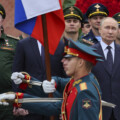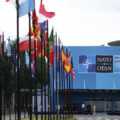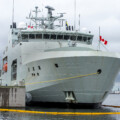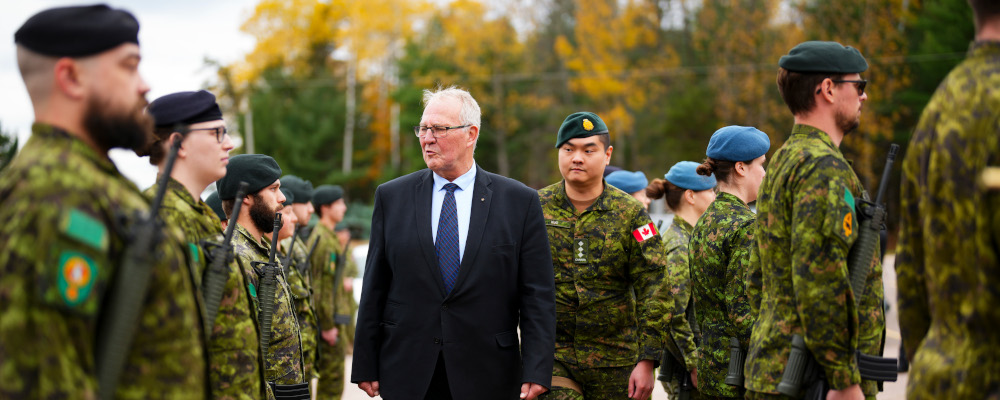Several weeks on from the release of the defence policy update, known as Our North Strong and Free (but generally referred to as the DPU), the entire effort remains a challenging one to assess. In many ways, it was a safe and timid document that does not go far enough to fix the deep problems afflicting the Canadian Armed Forces today. However, the reasons behind its lack of ambition are not immediately clear.
Historically, Canadian defence white papers are supposed to signal a new direction in government policy. That’s largely a function of the relatively long time between each one. The ambition of this DPU is very limited. Had it been part of a regular, incremental update process that was released in 2019 or 2020, then the DPU’s limited efforts would have been acceptable. Yet seven years since the publication of the last white paper, and following a year-long delay from its initial production to its release, it is clear much more radical reforms are required to address some of the profound challenges facing the CAF.
With Defence Minister Bill Blair’s blunt—but not inaccurate—assessment that the CAF is in a personnel death spiral, one would expect the government to launch a Herculean effort to address this crisis. However, the update makes relatively meek policy adjustments and re-announcements of existing programs which are not commensurate with the scale of the problem at hand.

This was evident in that much of what was included had already been announced or clearly telegraphed over the past few years. The 2022 NORAD modernization announcement, for instance, had already outlined many of the core areas of focus and investment contained in the DPU. What changed however was that a number of projects had progressed significantly and were being affected by the friction in the machinery of government that the year-long delay created.
The impact of the delay is evident in the case of the Canadian Patrol Submarine Project, which must deliver its first hull into service by the mid-2030s. At that time the Victoria-Class will be reaching the end of their service lives and their replacement would need to precede that event. The current timeline for the project envisions the government running a full competition, then building and accepting into service the sub in a little over a decade. This is highly ambitious for the Canadian procurement system, leaving little margin for error.
Similarly many NORAD projects have progressed significantly, but also require approval to move ahead. The DPU’s delay has potentially jeopardized these projects.Their timelines were viewed as being so critical that when the update was shelved last year, rumours surfaced that these time-sensitive programs might be announced and advanced individually. This would disconnect them from the DPU’s timeline in order to allow them to progress unimpeded.
It’s not all bad
There are some tentative positive signs in the DPU. NORAD renewal, where much of the new money is allocated, will be a major step towards building a multi- or pan-domain approach to warfare that is revolutionizing allies’ doctrines and force structures. The key program identified here is Integrated Air and Missile Defence (IAMD). As its name suggests, it seeks to connect a diverse series of sensors and other information inputs, as well as weapons, to create a common operational picture of the battlespace. IAMD as part of the broader NORAD modernization will allow the Royal Canadian Air Force to leverage developments undertaken by the United States Air Force and potentially bring the CAF as a whole up to speed. Similarly (and as noted by Alexander Rudolph), the creation of a cyberwarfare command, as well as a significant funding bump, will potentially elevate this critical area of warfare as the threat environment becomes much more threatening.
Also importantly, the Griffon tactical helicopter replacement program specifically cites that Canada may eschew acquiring a single replacement helicopter program and rather move towards a family of systems to take on the myriad of roles that the current fleet covers. This mirrors moves made by the U.S. Army, which has recently cancelled its future attack and reconnaissance aircraft program for a Griffon-like reconnaissance helicopter in favour of a mix of systems based on lessons gleaned from the ongoing War in Ukraine.
The problem with this approach is that the existing procurement system is poorly set up to execute such a complex program. It will therefore be interesting to see how it will unfold. While the DPU hints that the government is considering deeper reforms to how procurements are run, its track record in this area does not inspire confidence.
Why now?
So why release the long-delayed DPU now? A major factor is that it is likely to blunt foreign criticism of Canada’s lacking defence spending, partly in anticipation of the upcoming NATO summit in July. Perhaps the most consistent message officials stressed during its release was that committing to growing the defence budget to 1.76 percent of GDP was a major step forward to reaching its NATO commitment of 2 percent. They also noted that the government would actually reach the 20 percent threshold devoted to procurement. Messaging of this consistency, both within the document (where the NATO commitment was cited four times) and official statements illustrate its importance.
Yet it is not just NATO criticism that likely informed the paper’s construction. The extended discussion on the Arctic at the start of the update, as well as the immediate boost to NORAD modernization spending, suggests that the U.S. may actually be the primary audience for the white paper. This shouldn’t be surprising given how critical the bilateral relationship is for Canada’s overall prosperity. These fears are almost certainly heightened by the spectre of a second presidential term for Donald Trump. Thus the language and focus are likely to blunt criticisms emanating from the U.S., where the fairly ingrained perspective on both sides of the aisle is that Canada is freeloading on America’s defence spending. Placating Congress in particular is critical as it also plays an important role in setting policy and appropriating funding for NORAD/NORTHCOM, which is essential for its successful implementation.

Will the DPU actually be implemented?
Despite all these efforts, however, if clear messaging of Canada’s focus on defence was ostensibly the focus of the DPU, the government fell far short. One of the more curious aspects of the DPU surrounds its accounting. As noted above, the paper routinely discusses how defence spending will approach NATO’s two percent requirement but not reach it. Yet if all of the new and previously announced programs are executed as envisioned, the government would almost certainly reach the threshold, if not exceed it.
For example, the procurement cost of several platforms, including the new submarine program, was not included. Even more critically, in order to operate all of these new capabilities and roles identified in this update and the 2017 white paper, the CAF will require a major expansion of its currently depleted ranks, potentially adding more than 14,000 additional personnel. Accounting for all of the loose ends, it is almost certain that the DPU will get beyond the 2 percent threshold. This was clear last spring when I wrote a column highlighting the DPU’s likely price tag, the broad contours of which remain the same.
The reasoning behind the omission is hard to discern. A potentially generous interpretation is that these programs’ cost estimates are immature and not ready to be published in the DPU or commented by government. However, it has already been reported that the Navy has pitched the program with a $60 billion dollar price tag, so there are at least some estimates as to parts of the program’s cost. A much more uncharitable take is that the government was attempting to have its cake and eat it too by showing major progress to its allies while not revealing the truth costs of the modernization to its electoral base. It is evident that segments of the Liberal Party’s electoral base would be deeply uncomfortable with a major defence spending boost.
If the latter motivation is true, it does not bode well for the actual implementation of this update. The success or failure of a defence white paper is the political support it enjoys from the government of the day, and little inside this document suggests a sustained, long-term commitment to defence. If the government is truly worried enough about its electoral prospects to obfuscate key aspects of the DPU, that does not inspire confidence it will see through even the limited efforts contained within it.
Already this is evident in the DPU’s production. The document itself was prepared last spring but was shelved due to a lack of support within the cabinet. Only when the government’s political position became untenable a year later was the draft dusted off and then hurriedly released, with less than three weeks’ notice to the bureaucracy to prepare for the event.
That in a nutshell sums up the entire review effort. While the DPU has positive elements that if implemented wholesale could make a significant difference for the military, all of the indicators surrounding it inspire deep skepticism. From its production to the presentation of the details contained within, the government often seemed more interested in how it was perceived by the various constituencies it sought to impress. While the DPU will achieve some limited successes, it is unlikely to stem the much more widespread and systemic problems that the CAF and Canada face.
Recommended for You

Sean Speer: Investing in critical minerals isn’t just good business, it’s a national security imperative

‘Putin has no intention of stopping this war’: Sir Bill Browder on three years of war in Ukraine and how Russia is evading sanctions

The Weekly Wrap: The Liberals must abandon their internet regulation agenda

‘This is going to take a carefully executed strategy’: Ann Fitz-Gerald on whether Canada will ever spend 5 percent of its GDP on defence




